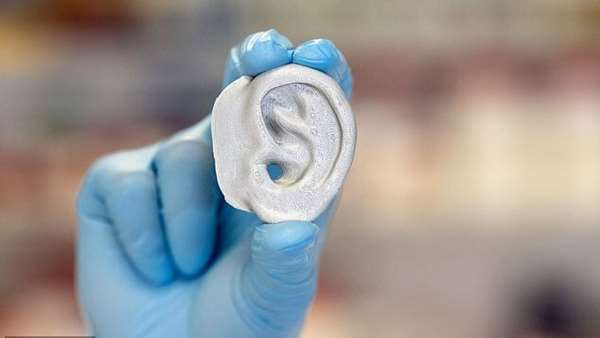WELSH RESEARCHERS SET TO 3D PRINT CARTILAGE FOR SCAR-FREE EAR AND NOSE TRANSPLANTS
A 10-year-old girl from the county of Pembrokeshire, Wales, is set to receive a new 3D printed ear made of human cartilage.
A 10-year-old girl from the county of Pembrokeshire, Wales, is set to receive a new 3D printed ear made of human cartilage.
Radiyah was born with a condition called microta, a congenital deformity that meant her outer left ear was unable to fully develop during pregnancy. Researchers from Swansea University are now undertaking a £2.5 million study in partnership with the Scar Free Foundation to 3D bioprint transplantable cartilage made of human stem cells and plant-based materials, providing Radiyah and others like her with a new approach to facial reconstruction surgery.
Radiyah’s father, Rana, told the BBC that it would be immensely helpful in boosting her confidence: “Girls like to tie their hair up and pierce their ears and to have two matching ears will be a positive thing. She started to lose a bit of confidence so we decided to go down the medical route.”
Radiyah was born with a condition called microta, which left her left ear underdeveloped. Photo via BBC.
Scar-free facial reconstruction
Cartilage is a tough, elastic connective tissue found almost everywhere in the human body. It covers and protects the ends of bones and the joints between them, acting as a shock absorber and enabling us to move around as freely as we do. Body parts like the outer ear and nose are also predominantly made of cartilage, which is what makes them so flexible.
People like Radiyah who have missing cartilage in their ears and noses have a number of options when it comes to reconstructive surgery. Ready and custom-made polymer prostheses are a viable option, but patients can also choose to use their own cartilage tissues from elsewhere in the body. Unfortunately, this often has the effect of leaving behind lifelong scarring at the transplant site.
The three-year Swansea study aims to address this issue and eliminate the need for cartilage retrieval altogether, 3D printing the required cartilage structures in a lab instead. The printed structures will be used as tissue scaffolds, whereby patient-specific stem cells will be cultivated on them to form the basis of a new nose or ear. The researchers intend to take the work far beyond Radiyah’s case, applying the technology to cancer survivors and burn victims too.
Rana adds, “If it wasn’t for this type of technology, she would have to have a skin graft instead which would mean she’d have a big scar on her skull and also under her breast area where they would have gone to get the cartilage. So she would have been left with a lot of scarring but by developing the ear in a lab, she will be scar-free.”




ارسال به دوستان